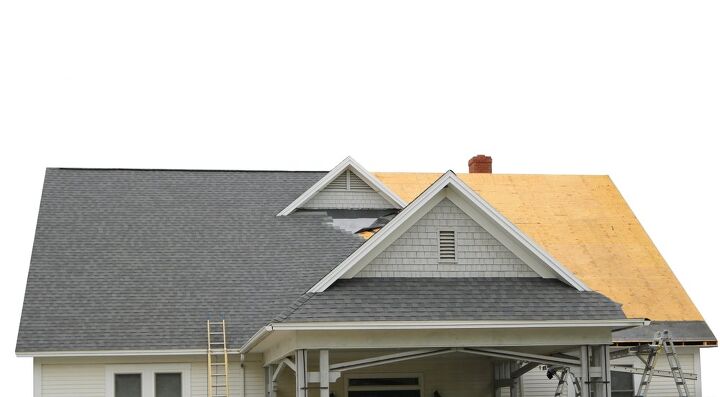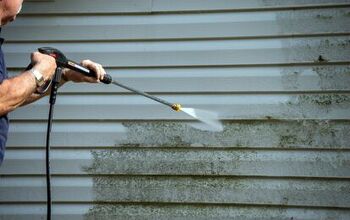How Long Does It Take To Reshingle A Roof?

Reshingling a roof is a project you won’t frequently encounter if you keep up with regular roof maintenance and cleaning. On average, reshingling a roof should happen every 20 years or so, depending on the shingle material. When it’s time to reshingle the roof, though, how long can you expect the roofing crew to take?
The time it takes to reshingle a roof depends on the materials and the roof’s size, design, steepness, and accessibility. Traditional asphalt shingles usually take one to two days; some roofing crews can complete 5000 square feet in a day. Wooden shingles take three to four days, slate shingles six to seven, and concrete shingles eight to nine.
In this article, we’ll cover how long it takes to replace different types of shingles. We’ll also discuss how often you should reshingle your roof and the best time of year to do so.
Do You Need Roofing, Siding, or Gutter Installers?
Get free, zero-commitment quotes from pro contractors near you.

How Long Does It Take To Replace Shingles?
There are several factors that influence how long it takes to replace a shingled roof. The weather, roofing materials, roof design, house size, roof steepness, historical significance, accessibility, and structural damage all play a part.
On average, however, it’s estimated that replacing a shingled roof takes one to three days. This is for an average-sized home and optimal weather conditions.
Some roofing professionals have provided more detailed estimates based on the type of shingles used. The quickest type of shingles to replace are asphalt shingles, which only take one to two days.
Meanwhile, wooden shingles usually take three or four days, and slate shingles take six to seven days. Concrete shingles take the longest at an average of eight or nine days.
How Many Squares Of Shingles Can Be Laid In A Day?
It depends on the size of the crew, their level of expertise, and the factors listed in the section above. However, a roofing crew of five or six people can complete up to 50 squares of shingles in a day.
A “square” in roofing terminology is 100 square feet of shingles. Therefore, 50 squares are equal to 5000 square feet of shingles.
How Many Hours Does It Take To Put On A New Roof?
Roofers typically work between eight and 12 hours a day. A typical asphalt shingle roof takes one to two days to install. Therefore, it can take between 16 and 24 hours to install an asphalt shingle roof.
However, this number can vary quite a bit due to various factors. One is the material used for the roof. Some roofing materials take much longer than others to install. For example, slate and concrete shingles take much longer than wood and asphalt shingles.
The weather is another huge contributor when calculating how many hours it takes to put on a roof. If the weather is consistently clear, then a roofing crew can complete installation much more quickly. But storms and inclement weather can slow down roof installation greatly.
How Often Should You Reshingle Your Roof?
The recommendation for how often to reshingle your roof depends on the type of shingles you have. Traditional asphalt shingles should be replaced every 15 to 30 years. Wood shingles have a longer lifetime of 20 to 25 years. Composition shingles last anywhere from 12 to 20 years.
It’s important to note that your shingles can last much longer with regular maintenance and cleaning. Annual or biannual inspections reveal problems before they get out of control, so homeowners can address issues as needed. But a poorly-maintained and infrequently-cleaned roof will need to be reshingled much sooner.
Another contributor to the lifespan of shingles is the local climate. Generally, if you live in an area with high humidity or severe winters, you’ll need to replace your shingles sooner. If shingles are exposed to frequent high winds and severe storms, that can cause damage as well.
When Is The Best Time To Reshingle Your Roof?
Fall, specifically September, October, or November, is the best time of year to reshingle your roof. The weather is typically mild, with less rain than in the summertime. The temperatures are usually comfortable for both the roofing crew and the shingles.
Yet another reason to reshingle your roof in the fall is that the temperatures are perfect for the shingles to seal effectively. Couple that with lower humidity and less rain, and it’s the ideal environment for shingles. They can be installed and sealed properly before the snowfall comes.
Springtime is considered the second-best time to reshingle your roof. Roofing companies typically have more open schedules during this time, and humidity is pretty low in the spring as well.
Do You Need Roofing, Siding, or Gutter Installers?
Get free, zero-commitment quotes from pro contractors near you.

Related Questions
Can you put shingles on top of existing shingles?
You can put shingles on top of existing shingles, but this isn’t always recommended. It’s especially important to install these shingles correctly, so that they lie flat on the roof. In addition, you’ll want to replace the flashings rather than relying on existing ones.
Although you can DIY this project, it’s better to leave it to the professionals. Poorly-installed shingles can lead to a variety of issues down the line.
There are several potential downsides to installing new shingles on top of old ones. First, this prevents inspectors from fully examining the roof’s condition. Plus, it can be more expensive in the long run.
Another problem is that installing multiple layers of shingles can void your roof’s warranty. There are also worries concerning weight strain and building regulations.
Can you reshingle a roof in the winter?
It is possible to reshingle a roof in the winter. However, it’s considered the worst of the four seasons for this project. Still, there are benefits to reshingling your roof in the winter, such as roofing companies’ open schedules.
Roofing professionals generally take numerous precautions when reshingling a roof in the wintertime. They use fall protection equipment such as harnesses and utilize snips instead of utility knives to prevent shingles from breaking. They also place materials inside warm trucks to ensure they can be installed properly and won’t freeze.

With a lifelong passion for writing plus strong enthusiasm for home improvement and DIY projects, joining the team at Upgraded Home was an easy choice. Jessica Allen likes to share helpful information with current and aspiring homeowners. Aside from writing, Jessica loves doing yoga, playing the piano, and dabbling in graphic design.
More by Jessica Allen



























